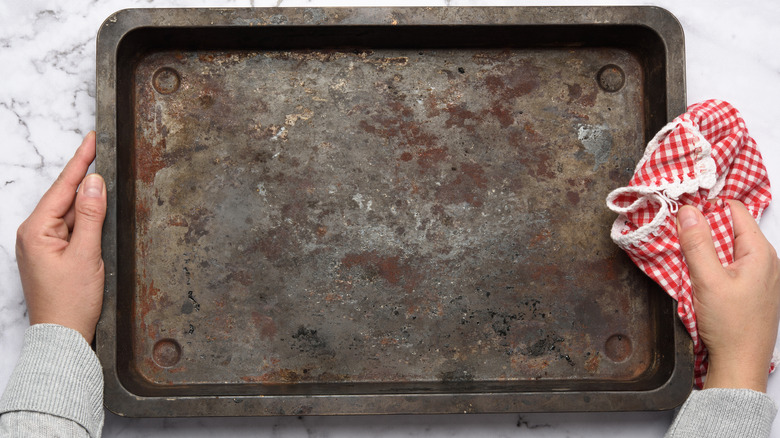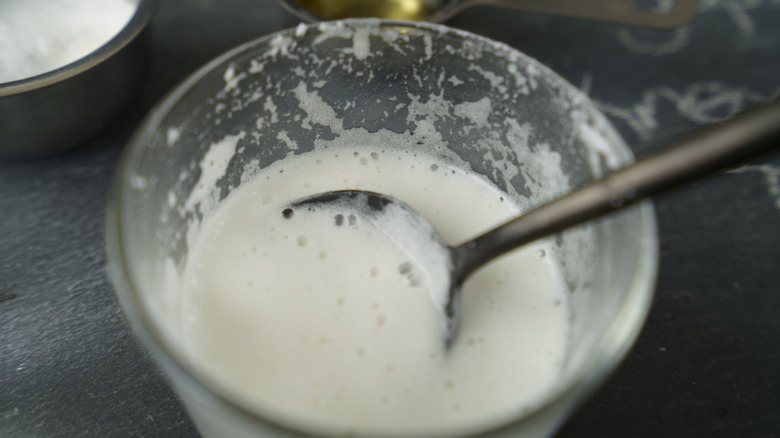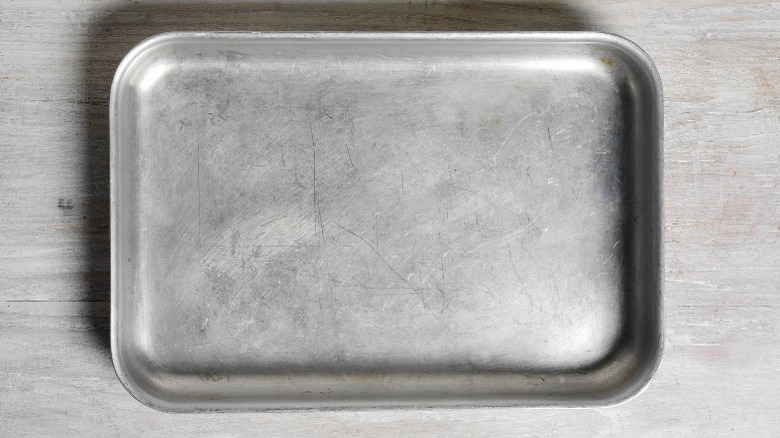Bring Life Back To Your Well-Loved Baking Sheets With This Medicine Cabinet Staple
Are your once-gleaming baking sheets now tarnished and worn from the countless culinary adventures they've embarked upon? Fear not, for the solution lies within the confines of your medicine cabinet: hydrogen peroxide. This unassuming household staple, renowned for its antiseptic prowess, holds a hidden talent as a formidable cleaning agent. How can this product breathe new life into your beloved baking sheets, ensuring they are ready for many more delicious creations?
Understanding why and how hydrogen peroxide works its magic is crucial in appreciating its effectiveness in reviving your baking sheets. Hydrogen peroxide, with its unique chemical composition of two hydrogen atoms and two oxygen atoms (H2O2), undergoes a bubbling reaction when it comes into contact with organic matter. This includes the remnants of baked-on foods and greasy build-up on your baking sheets. The bubbling action is a visual cue that the hydrogen peroxide is actively breaking down these residues, making them easier to lift and wipe away. As we explore the wonders of hydrogen peroxide and its ability to restore your baking sheets to their former glory, let's first understand why these baking sheets lose their luster in the first place.
The power of hydrogen peroxide
The residue of baked-on delights, grease, and stubborn stains can accumulate over time, detracting from the sheet's aesthetic appeal and potentially affecting its performance. Understanding how hydrogen peroxide has the ability to combat these issues is a great starting point. What sets this household staple apart is its effervescent nature, which proves instrumental in breaking down the toughest stains, stubborn grease, and the residual aftermath of countless baking sessions on your cherished sheets.
Hydrogen peroxide, with its bubbling action and oxidative prowess, is an effective cleaner on its own. However, the addition of baking soda elevates its cleaning power to a whole new level. Baking soda, or sodium bicarbonate, is a mild alkaline compound that interacts with hydrogen peroxide in a way that enhances its effectiveness. When these two ingredients are combined, they create a slightly abrasive paste with a pH that is more conducive to breaking down stubborn residues.
Now that we've uncovered the magic behind hydrogen peroxide, particularly when combined with the powerhouse that is baking soda, we can uncover the practical steps that will breathe new life into your well-loved baking sheets. The process is not only effective but also straightforward, ensuring that you can easily incorporate it into your routine for hassle-free kitchen cleanup, making the once-daunting task of cleaning your baking sheets surprisingly simple.
How to harness the power of hydrogen peroxide
Before diving into the cleaning process, it's crucial to note that baking soda can potentially damage certain types of baking sheets, such as aluminum and non-stick varieties. Keep this in mind as you choose your cleaning method. Using hydrogen peroxide alone might be a safer alternative to avoid potential damage. This way, you can still harness the impressive cleaning capabilities of hydrogen peroxide while keeping your baking sheets in good condition.
Make up a paste with hydrogen peroxide and baking soda. This preliminary step sets the stage for the subsequent cleaning process. Apply the hydrogen peroxide and baking soda paste generously to the stained and greasy areas of your baking sheets. Allow this magical concoction to work its charm for a couple of hours. During this time, the paste penetrates and loosens the stubborn residues, preparing them for a thorough cleansing.
Wipe away the mixture, and if necessary, use a non-abrasive sponge or brush, take to the sheets, and scrub away the loosened grime. Focus on areas that require extra attention, ensuring a proper clean. As you scrub, you'll notice the once-resilient stains yielding to the combined power of hydrogen peroxide and baking soda. Rinse the baking sheets thoroughly with water, removing any remaining residue and leaving behind a gleaming surface. The result? Baking sheets that not only look brand new but are also ready to accompany you on countless more culinary adventures.


